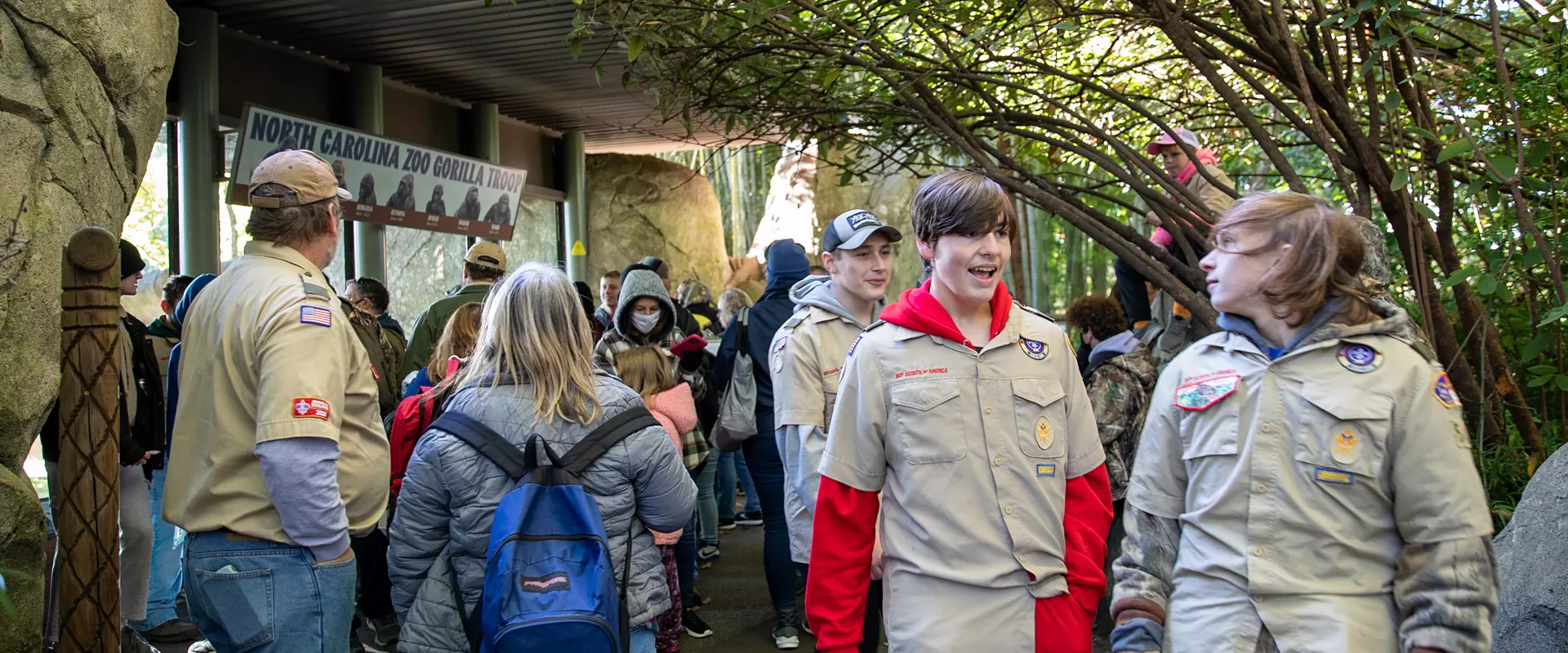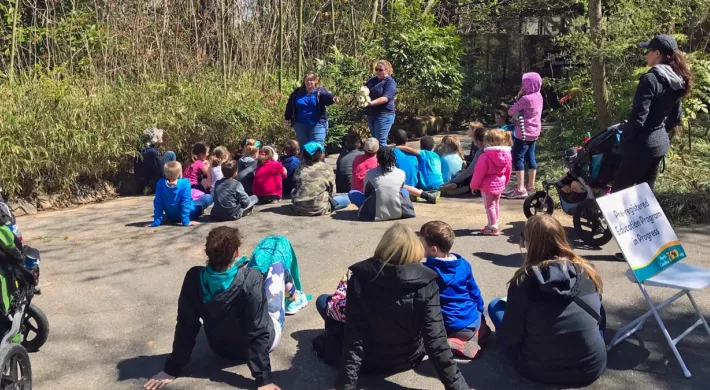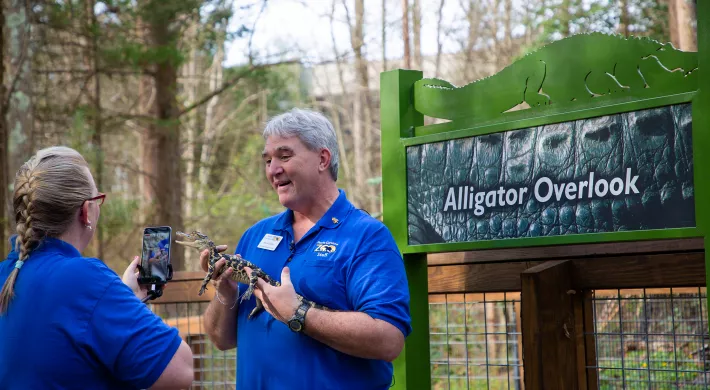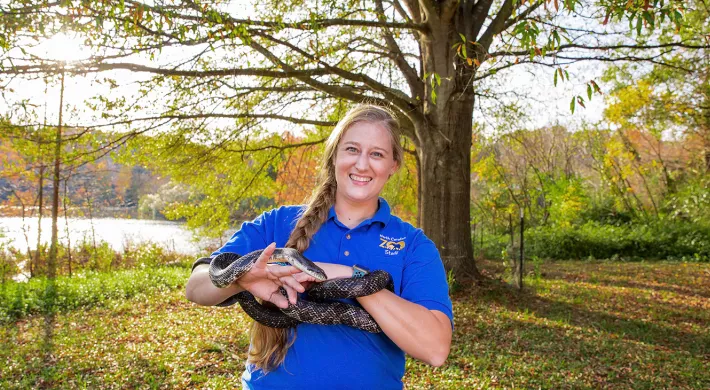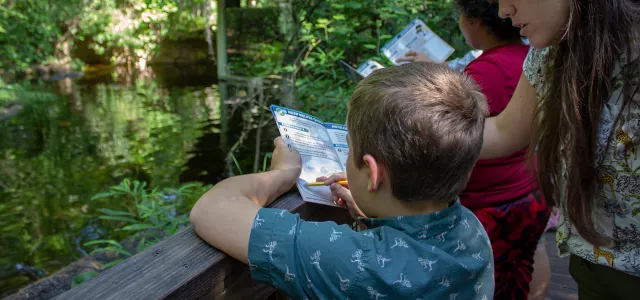Scout Leader Hints
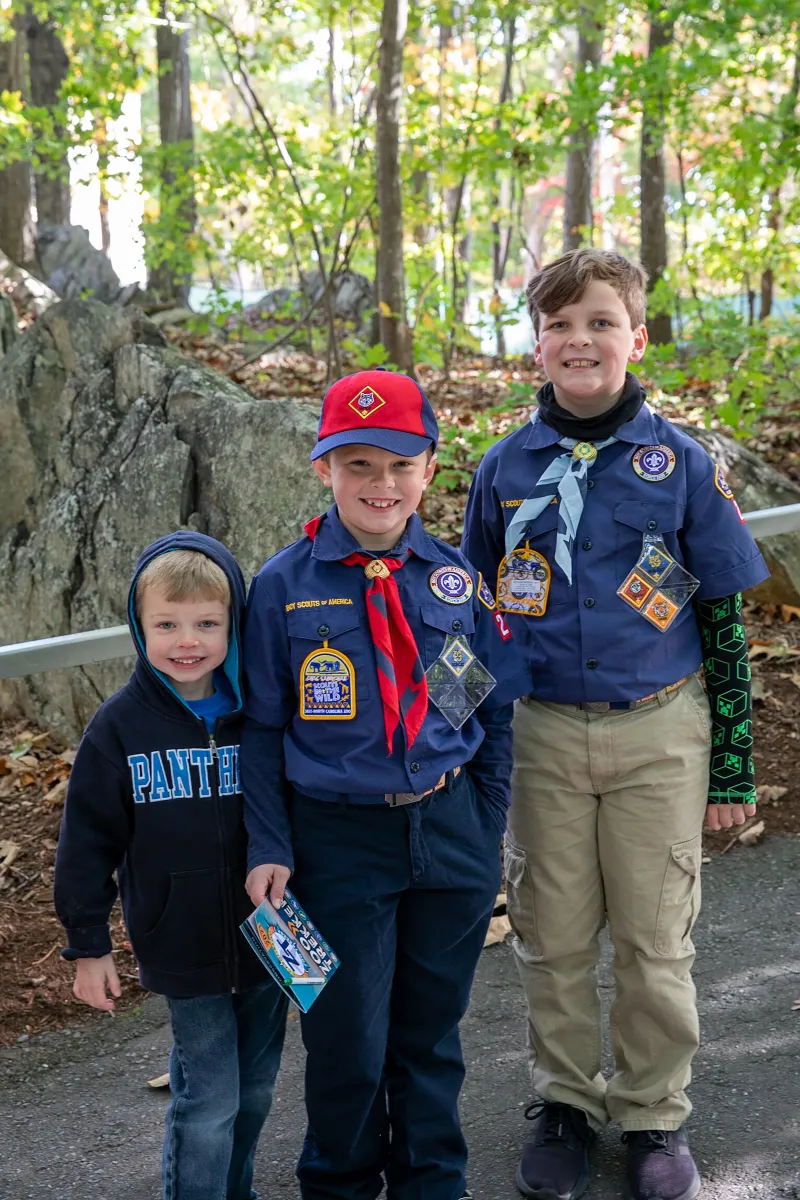
The North Carolina Zoo is dedicated to assisting all Scout leaders in providing meaningful and memorable Zoo experiences to their scouts. The tips below will help Scout Leaders provide an experience that highlights issues of conservation while fostering excitement for the animals. They may also share some insight into how Scouts can work to protect wildlife and wild places all around us.
Want a Patch to Commemorate Your Activities or Your Visit?
"North Carolina Zoo Scout” patches can be purchased from the Earth Explorer gift shop in North America. You may choose to use these as incentive for completing activities or as a reward for taking part in the Zoo experience.
Need Ideas for Your Next Scout Meeting or Visit?
Take a look at our Educator Resources for additional pre- or post-visit activities. Feel free to design your own program and use the patch as a reward for completing your own requirements.
Don’t forget Zoo Trekker! It’s a free activity guide that can be picked up during your Zoo visit. Through fun interactive quests participants learn about conservation and animal care and wellbeing. Complete 6 of the 12 quests and you earn a souvenir pin!
Please visit the Zoo's online reservations to make admissions arrangements for your scout group.
If you are interested in an education program for your Scouts while at the Zoo, please visit Ed-Zoo-Cation Group Programs to see available programs. Although not designed to complete an entire badge, programs may have activities that are aligned with some badge criteria.
The North Carolina Zoo thanks you for your time. We hope the Scouts take what they discover at the Zoo and – working together -- create opportunities for change that make huge positive impacts on the environment within their community.
Tips for Leader Facilitated Activities
The below tips can be used as activities during, before, or after your Zoo visit.
- Take a nature walk around your neighborhood, park, school, church, or meeting place. Use on-line or traditional field guides to help identify what you find. Keep a journal of each walk.
- Take photos or create paintings, drawings, or sculptures of animals you see at the Zoo. Not an artist? Prepare a short story or poem about your favorite Zoo animals. Share your masterpieces during a meeting.
- Develop a poster or presentation about the need for conservation of wildlife and wild places.
- Look for animals that may rely on camouflage to help them survive in their environment. Design a butterfly or other animal that blends in well with some area in or around your home. Place your creation in the area and see how long it takes someone to find it.
- Plan a trip to the Zoo. How far is it? How will you get there? How much money will you need for your visit? What type of clothing would you recommend? What animals do you plan on seeing?
- Complete a project to benefit the environment. Get creative! Here’s a few examples, but can you come up with some of your own?
- Plant a wildlife attraction garden
- Create a bird feeder station
- Plant trees
- Adopt a stream
- Plan and complete a recycling project
- Design your own zoo and animal habitats. Why did you select the animals you did? Did you include everything in their homes they need? Maybe this is an activity for the entire group, with Scouts designing a certain area. Put all the areas together at the end. Can you build a model of your new zoo?
- Make a list of endangered animals and plants in our area (or at the Zoo). Research and present on what caused them to become endangered. Identify things we can do to make the Earth a healthier place for all living things.
- Discuss how the Zoo might serve the local community and animals in the future.
- Explore careers at the Zoo. Think about the entire Zoo! Zoo Director, education, veterinarian, zookeepers, horticulturalist, exhibit designer, ranger, admissions, finance, mechanics, electricians. Almost any job can be found in a zoo!

